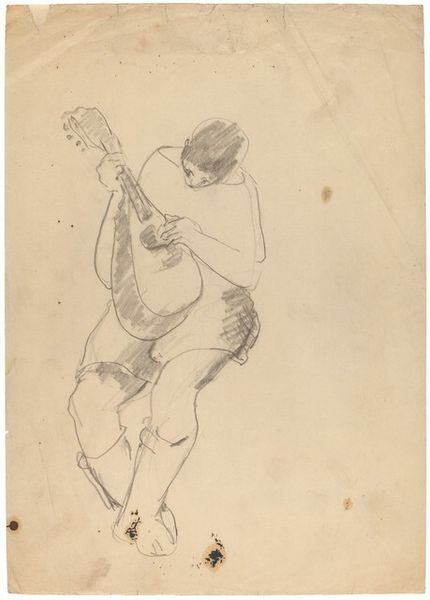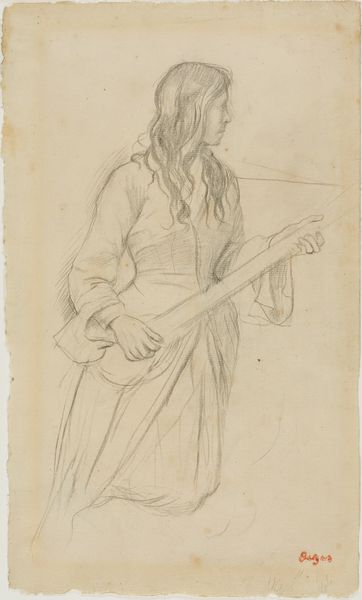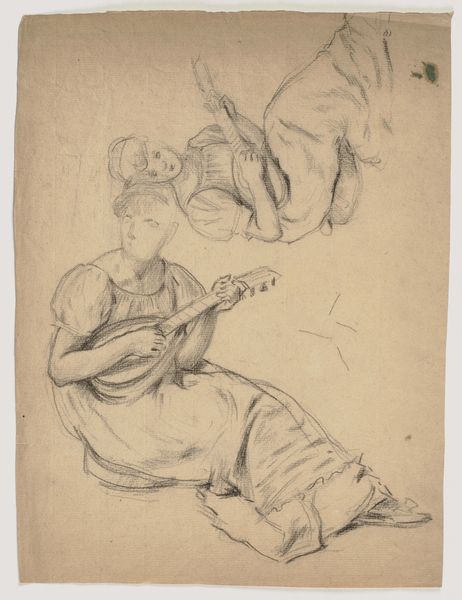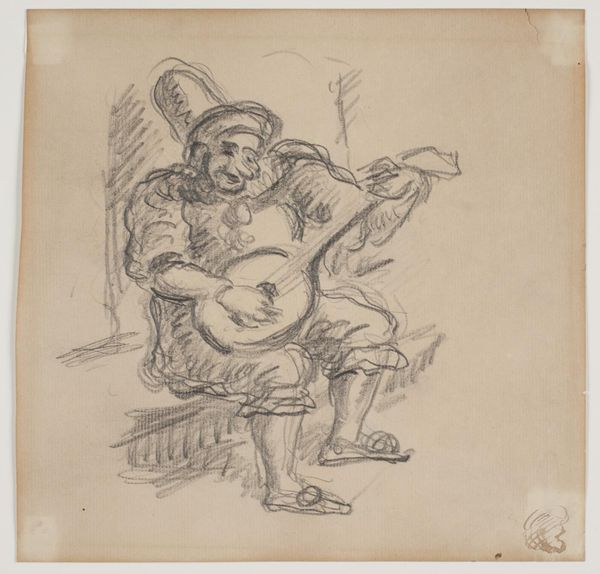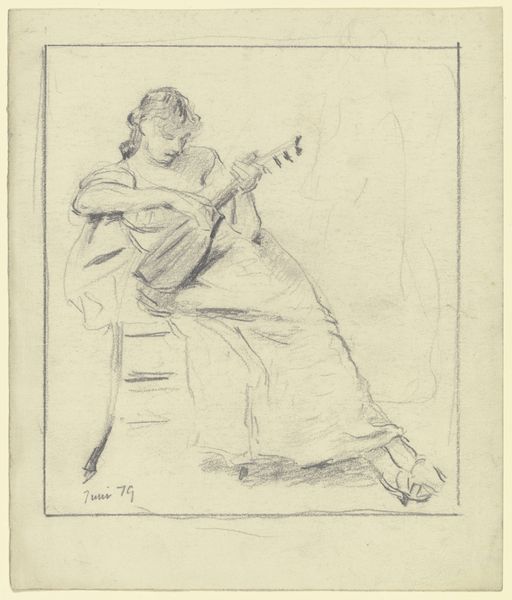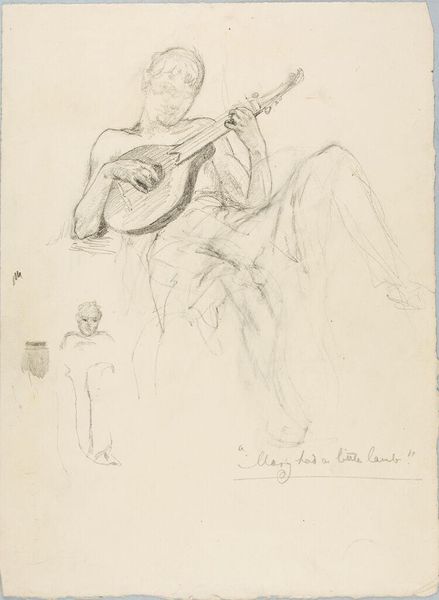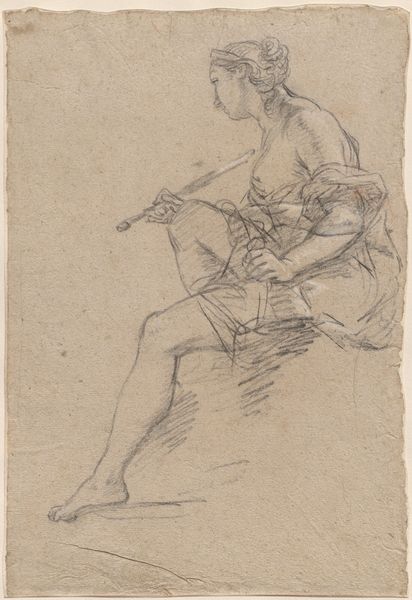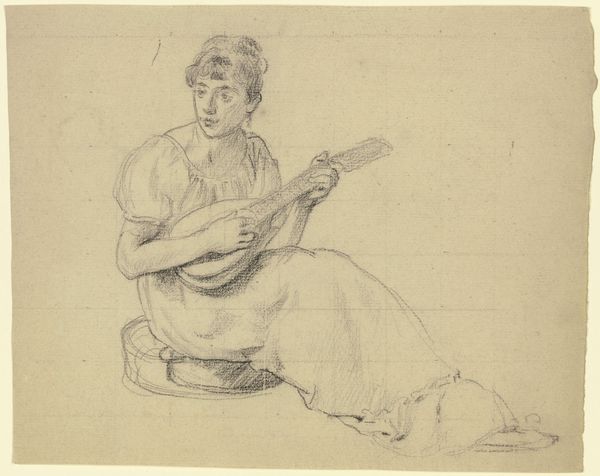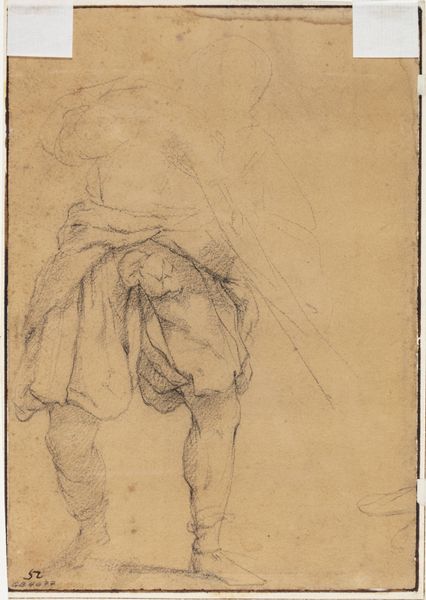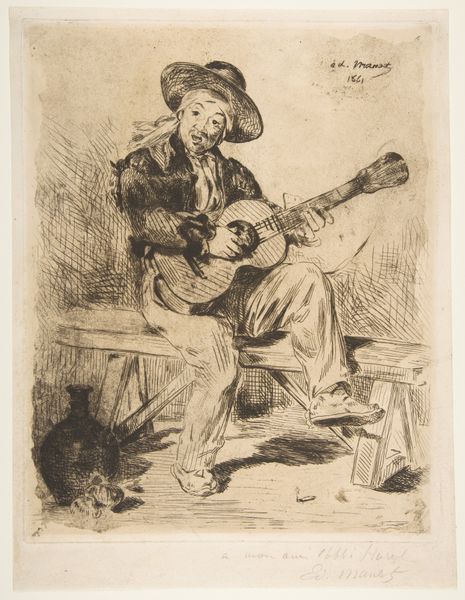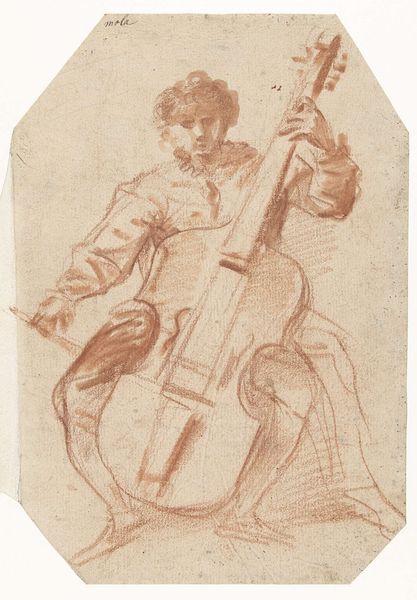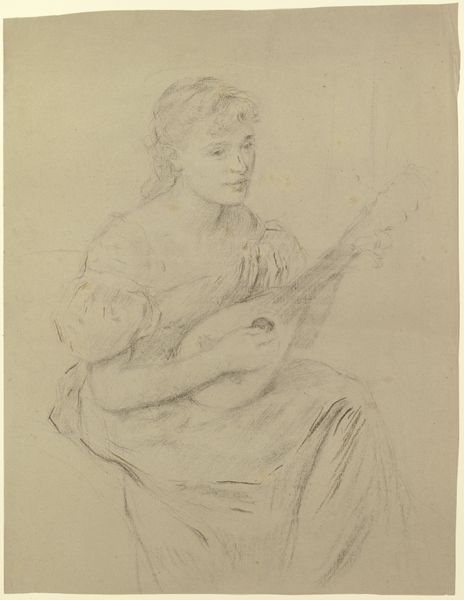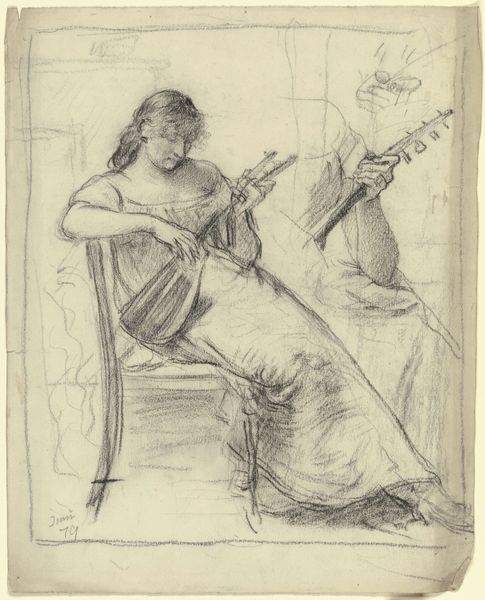
drawing, pencil
#
portrait
#
drawing
#
toned paper
#
light pencil work
#
pen sketch
#
pencil sketch
#
figuration
#
11_renaissance
#
personal sketchbook
#
ink drawing experimentation
#
pen-ink sketch
#
pencil
#
sketchbook drawing
#
pencil work
#
sketchbook art
Dimensions: 222 mm (height) x 156 mm (width) (bladmaal)
Curator: Let's turn our attention to "Drummer," a drawing by Filippo Paladini, created sometime between 1544 and 1615. It's currently housed at the SMK, the National Gallery of Denmark. What are your initial thoughts? Editor: Immediately, I'm struck by the stark simplicity, it looks like a sketch rather than a fully realised work. You can almost feel the speed of the artist’s hand across the toned paper. The roughness speaks to the immediacy of the act of creating itself, drawing my eye to how its form conveys materiality. Curator: I see this work in the context of performativity and class. Think of the drummer's role—often associated with public spectacle, with announcements or rallying support, but occupying a position that is maybe liminal, a tradesman, maybe lower class depending on the situation, in this historical setting, he probably lived on the social margins. The pose itself, side-on, hints at something observed, maybe almost illicitly captured. Editor: I agree the raw sketch aesthetic emphasizes the act of creation and manual skill. Note the deliberate use of pencil, it could almost be ink at points. Was Paladini playing with high and low media, subverting the traditional hierarchy of art materials? I imagine Paladini deliberately foregrounding process. What does this mean for Paladini’s standing as a court artist, for instance? Curator: I'd argue the chosen medium allows the portrayal of transient movement; the fleeting existence of the performer in the historical space. Paladini focuses less on capturing a polished image but rather uses these rapid strokes to convey immediacy. Perhaps, then, it is more akin to capturing a social situation on paper, not merely a visual display. Editor: Considering the economic status linked to a drummer's life and artistic consumption back then, it does invite an examination of patronage and labor. How often were artists themselves from similarly working class backgrounds, having familiarity and respect for everyday practices that were then being translated? This sketch gives voice to work. Curator: It challenges assumptions and brings the experiences and social commentaries linked to a population that is often ignored. It asks the viewer to question what and who gets to be framed in the context of history and why? Editor: For me, thinking about how it was made deepens an awareness of those blurred class lines during the Renaissance—the artisan's studio versus the grand academy, and that gives value back to artwork.
Comments
No comments
Be the first to comment and join the conversation on the ultimate creative platform.
